Saleswhale Blog | 7 Min Read

Today, sales and marketing teams are frustrated by the lack of visibility and resources needed to make sure every marketing-generated lead gets the attention they deserve.
According to Forrester, just 8% of companies say that they have strong alignment between their sales and marketing departments. That's a disappointing percentage! When businesses have strong sales and marketing alignment, they achieve 208% higher marketing revenue than businesses that have poor alignment.
The misalignment mostly comes from the lead qualification, lead hand-off, and lead follow-up stages.
Here's a common scenario:
Marketing spends tens of thousands of dollars to sponsor a trade show, generates 800 leads, and passes these leads to sales.
"Hey, can you call this entire list, and try to book as many meetings as possible? I'll check in again after 6 months to see how many of them converted into pipeline and closed-won deals."
What happens next will be familiar to most revenue teams.
The sales team will sort through the list, find the top 10-15% of prospects that look the most promising, and de-prioritise the rest. Over time, the de-prioritised leads get forgotten and become stale.
Six months later, during attribution and ROI analysis, the finger pointing between sales and marketing begins.
Marketing: "We were not able to show ROI because you are not working on our leads."
Sales: "Well, the leads you give us are not good."
Sales reps ignore 50% of all marketing leads. Actually, that is for good reason.
Focus, prioritization, and the ability to choose carefully where to expend "sales calories" are crucial for any high-performing sales rep.
Furthermore, according to MarketingSherpa, 61% of B2B marketers send ALL leads directly to sales. However, only 27% of those leads will be qualified or actively looking to buy. The rest will need regular follow ups and engagement before they are interested to buy. No salesperson has time to do that - for hundreds or thousands of leads!
Unfortunately, this also means that lots of viable leads are left on the vine to wither.
Marketing gets frustrated about the wastage of their hard-won leads, and deals potentially going to competitors.
How can sales and marketing move past this stalemate?
Increasingly, organizations rely on AI assistants to engage leads, qualify them, and sync crucial customer data into CRM systems.
Saleswhale is one example of such an AI assistant. Since 2016, our AI has helped over a hundred mid-market and enterprise teams eliminate tedious work and uncover more sales opportunities.
Take Zendesk, one of our customers.
Every month, Zendesk's marketing generates more leads than sales can adequately follow up with.
Though it's a happy problem to have, Zendesk wanted a more efficient way to scale lead engagement without hiring more sales people to handle the leads. So, Zendesk deployed Saleswhale AI assistants to reach out to leads and:
Saleswhale ensures all our leads are followed up appropriately and efficiently, leaving no stone unturned. It's definitely a great tool for companies looking to automate part of the sales process and ensure all leads are followed up accordingly."
-- Sarah S., Growth Marketing Manager, Zendesk
Another way that AI can help to align sales and marketing, is to maximize the use of marketing content.
Marketing spends a ton of effort and resources to generate content and sales collateral.
However, according to Content Marketing Institute, 60% - 70% of all B2B content created is never used. This is a huge waste - and missed opportunity.
Content is a key part of most marketing strategies, and for good reason: 95% of customers buy from companies who give them relevant content at each stage of the Buyer's Journey.
AI can help to up-cycle your existing marketing collateral and content, and use them to add value to prospects during follow ups:
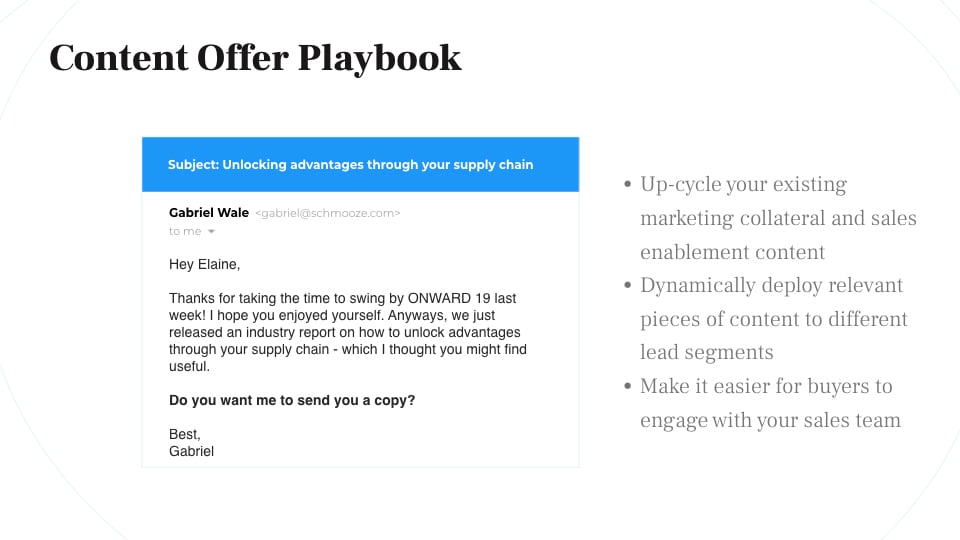
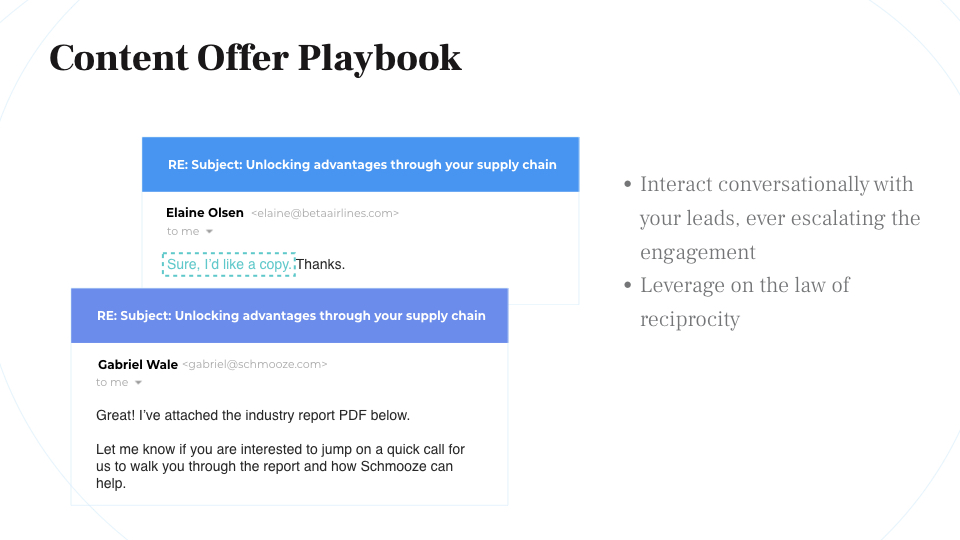

Not many buyers want to jump on a call or meet a sales rep without doing some research first. Thus, when reaching out to cold or dormant leads, sales people should avoid being too aggressive in getting leads to meet.
Patiently engaging with the lead and providing value is a much better idea. But this can be monstrously tedious to do, at scale.
Imagine sending an email to 2,000 leads, segmented across different verticals, to ask them if they would like to receive some content.
36% of them reply favourably (based on actual engagement statistics from Saleswhale, aggregated across millions of emails).
Now, your sales person has to manually attach relevant PDFs, across different verticals and segments, and email 720 prospects. This could take days, or even weeks.
Two days later, the sales person has to send a follow-up email to ask if they have any questions, and if they want to jump on a call.
The above is impossible for a company to do at scale, but quite trivial for an AI.
Saleswhale's AI sales assistants managed to book 200 sales meetings for a Fortune 500 customer in a span of 6 weeks, by running the above content offer playbook on a few thousand dormant leads sitting untouched in their database.
Keeping data up to date in CRM systems and marketing automation platforms is critical for marketing and sales teams to work well together.
Marketing cannot provide the requisite air cover for Sales if there are data gaps. For example, missing contacts, outdated email addresses, or not being able to identify demand units. But many sales people find updating CRM systems troublesome and time-consuming. High-performing sales people would rather serve and close new customers, than do mundane and repetitive administrative chores.
AI can help marketing and sales operations teams automate data capture.
AI can capture email conversational data exhaust and keep CRMs updated. Data such as net-new contacts cc'ed into an email, new contacts from out of office emails, direct dials & phone numbers from email signatures, follow-up dates, rejection reasons, competitor mentions etc.
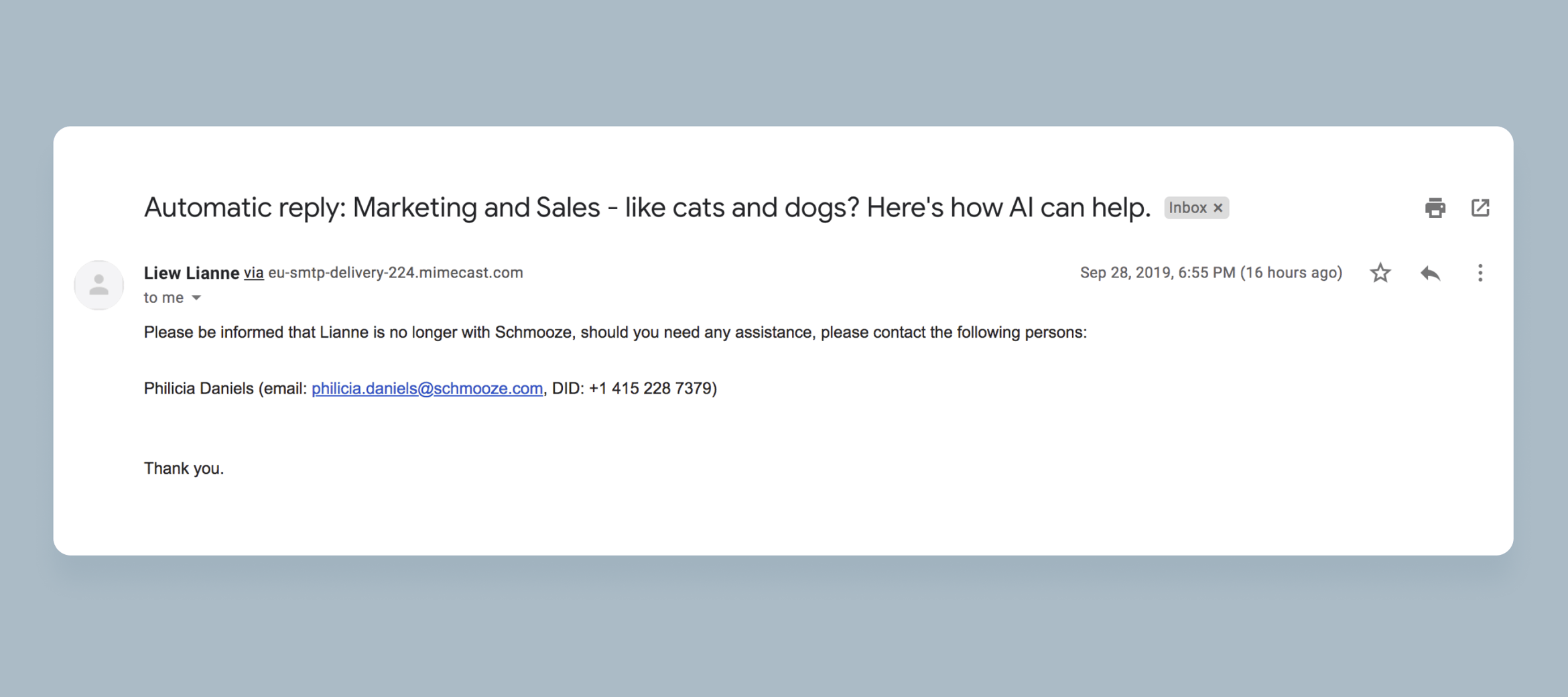
Within a short span of six months, Saleswhale was able to help a global multi-national customer capture tens of thousands of net-new contacts and phone numbers, and sync the data into their database.
They were then able to leverage the data collected to run targeted marketing automation nurturing campaigns on the segmented leads.
All these data were not previously captured and entered into the CRM by the sales team, despite urgings from the marketing and sales operations teams. Armed with this data, the marketing team could finally market to the full buying group & demand unit - and provide air cover to the sales team much more effectively.
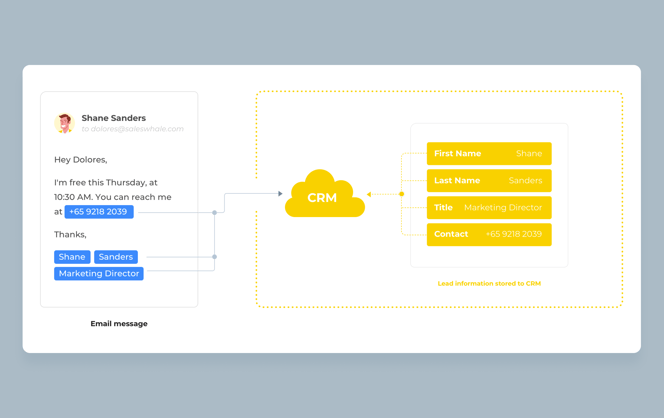
Capturing direct dials and phone numbers from email
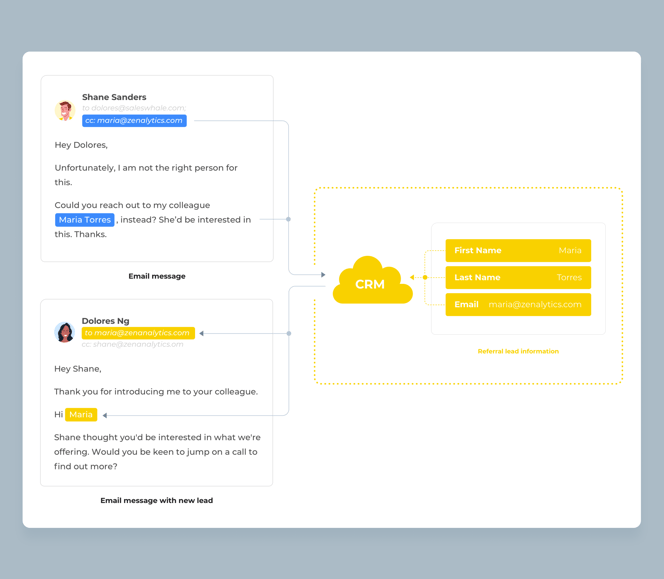
Capturing and enriching net-new contacts and decision makers from emails
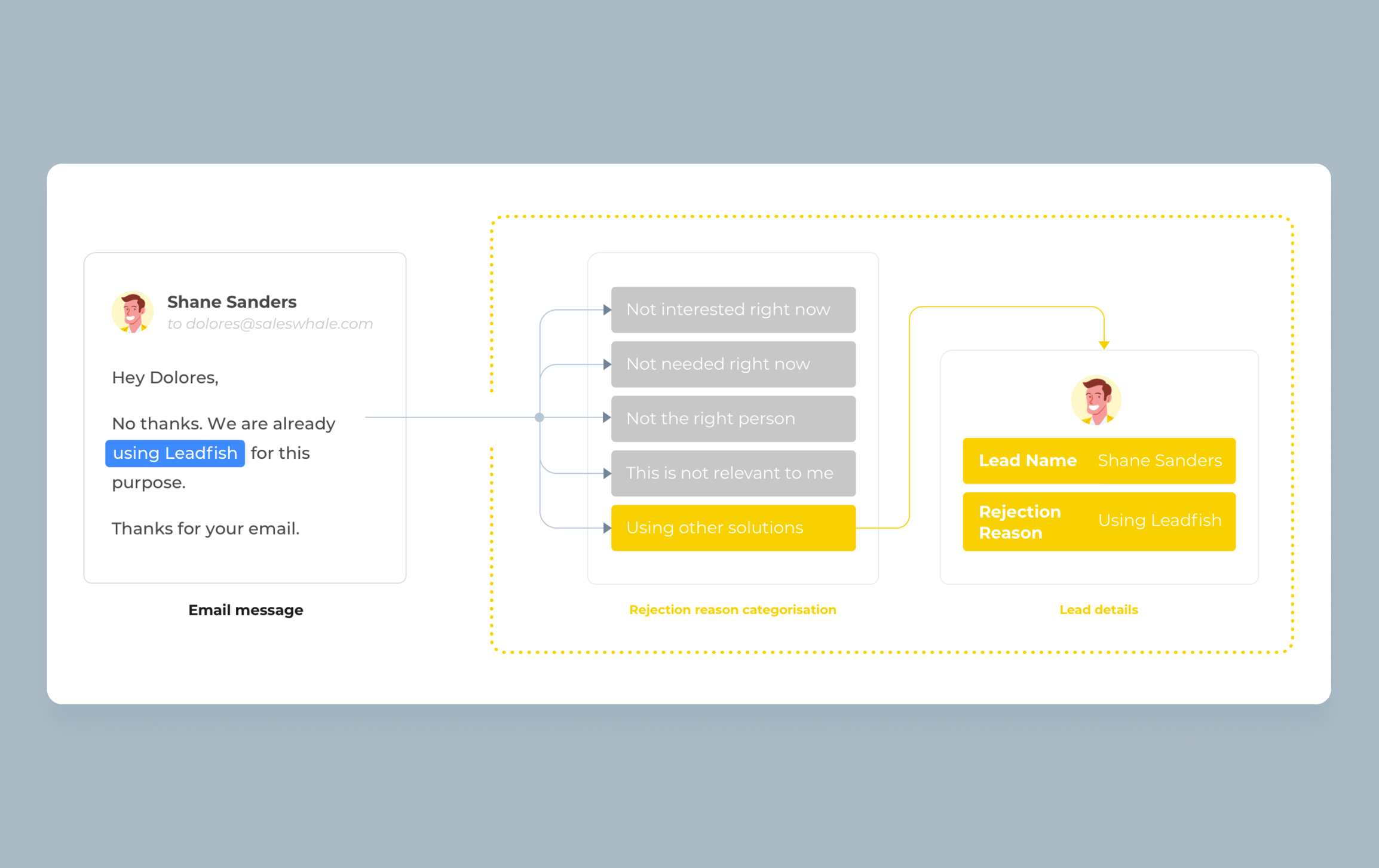
Capturing rejection reasons and competitor mentions in emails
Look through your CRM, and be honest with yourself.
Out of all the marketing leads that were generated over the past year or so, how many ended up untouched and forgotten, due to a lack of sales follow up? How will you revive these lost revenue opportunities?
Over the next three years, enterprises will continue to leverage on AI to allow them to capture back lost sales productivity and wasted marketing budget. Gartner predicted that by 2020, customers will manage 85% of their interaction with the enterprise without interacting with a human.
We believe that companies who leverage AI will continue to capture market share from late adopters who still rely on manual human effort for repetitive and unscalable work. Their sales and marketing teams will be more aligned, and drive more revenue across the enterprise.
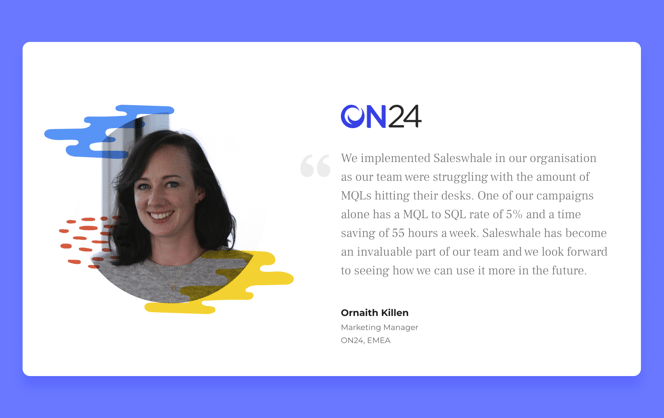


Co-founder & CEO at Saleswhale
Sign up for cutting edge ideas on conversational marketing, AI assistants and martech.

Saleswhale for Salesforce allows you to build powerful automated lead conversion workflows. This allows you to re-engage with your neglected marketing leads at...
19 APR 2021
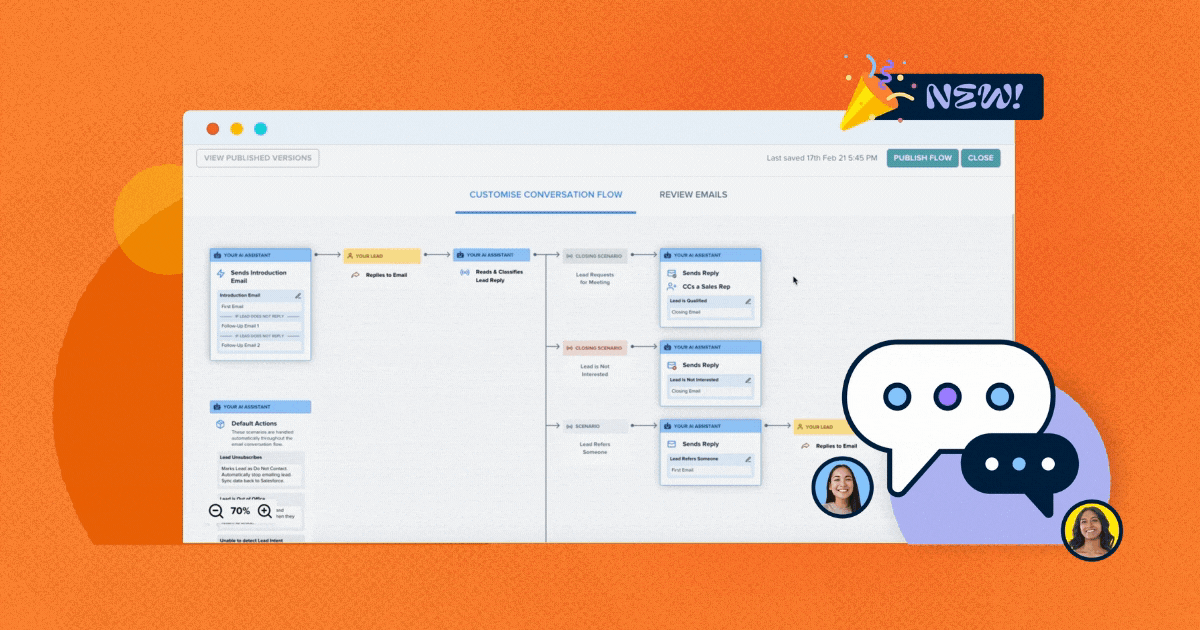
Demand generation and marketing teams generate more leads at the top of the funnel than ever in this new digital-first world. Saleswhale helps ensure those...
1 MAR 2021

Marketers that focus on MQLs end up doing the wrong things in order to achieve the metrics. So I changed it.
16 JUN 2020
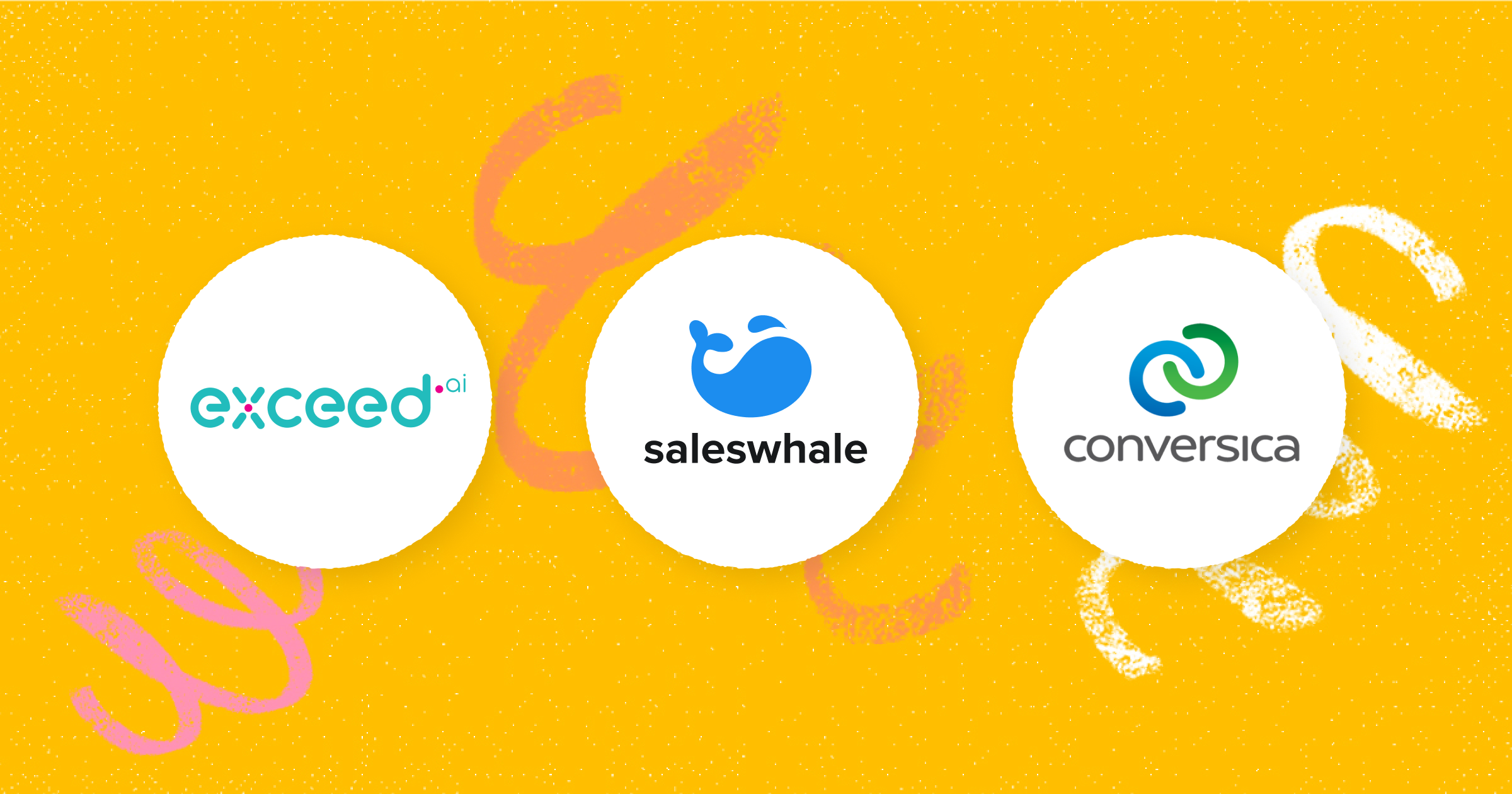
Conversica isn't the only player out there. Learn how Saleswhale and Exceed.ai compare and make an informed decision.
15 APR 2021
By providing your email you consent to allow Saleswhale to store and process the personal information submitted above to provide you the content requested.
You can unsubscribe at any time by clicking the link in the footer of our emails. For information about our privacy practices, please visit our privacy page.